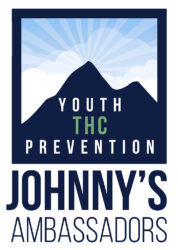By Laura Stack
Vaping was supposed to be a good thing. We know better now.
Some clever person invented electronic cigarettes—little vaping pens that heated nicotine-infused liquid and released it as a vapor (technically an aerosol), rather than smoke. Initially, vaping was perceived as a safer way to ingest nicotine; indeed, it was going to help many people quit smoking cigarettes. In the years that followed, vaping in general became increasingly popular—in part because it came in flavors, and it was touted as much healthier than smoking.
Until suddenly, it wasn’t. Marijuana manufacturers (often the same as the tobacco companies) realized that THC could be vaped too. Children discovered they could vape in secret at home and in school bathrooms. In fact, they could vape high potency 90+ THC oil right under their parents noses without their parents’ knowledge. Like Johnny is saying in the cartoon, “It’s just vape, mom, no big deal.” Nothing could be farther from the truth.
Deadly Vapors
In August 2019, an outbreak of a previously unknown lung disease broke out across the United States. Physicians working together in different states concluded that frequent vaping of marijuana oil caused the new disease. The CDC named it EVALI (E-cigarette or Vaping product use-Associated Lung Injury). Within a year, it had taken over 70 lives, with more than 2,700 known cases in the U.S.A. The CDC predicts life-long effects for many of those who survive the illness. Symptoms include shortness of breath, coughing, chests pain, nausea, vomiting, fever and chills, diarrhea, rapid heartbeat, and rapid and shallow breathing. The CDC has traced many of these cases back to contaminated THC vape solutions—so now we have yet another ailment to add to the litany of marijuana-related illnesses and conditions.
It’s worth reciting that litany again. In young users, marijuana use can cause:
- Cannabis Use Disorder
- Brain damage
- Permanent loss of 6-8 IQ points
- Anxiety
- Panic attacks
- Depression
- Paranoia
- Psychosis
- Marijuana toxicity
- Increased risk of schizophrenia
- Suicidal thought and behavior
Because their brains are still forming, adolescent and teen users are particularly vulnerable. They are hit hard by these outcomes, particularly when they vape high-THC solutions or use vaping rigs to “dab” THC products like wax and shatter that contain 90+ THC content.
The CDC recommends young users avoid vaping altogether. However, the vaping industry (now largely controlled by Big Tobacco and nascent Big Marijuana) has pushed back, suggesting instead that the government legalize and regulate the sale of THC vaping solutions.
Marijuana use among adolescents was already bad enough, given the long list of mental and physical defects it can cause, mostly because it interferes with the development of the prefrontal cortex of the brain. Increased THC concentration even in “bud” marijuana has contributed to the danger; the modern strains can be as much as 35 times stronger than the classic “Woodstock weed,” which rarely rose above 1-2% THC concentration. Now, with EVALI, the risk of long-term physical damage has become even worse. These days, vaped marijuana might as well explode in the user’s mouth.
The Endangered Age Gap
The vaping of THC and other cannabinoids, including synthetic varieties, has significantly increased among U.S. adolescents between 2021 and 2023. Data from the National Youth Tobacco Survey (NYTS) indicates that millions of teens are currently using these products, often without being fully aware of their contents due to rising use of unregulated vapes.
https://www.sciencedirect.com/science/article/pii/S0749379725001473
Prevalence of THC and other cannabis vaping
- Overall trends (2021–2023): According to the NYTS, the past 30-day prevalence of THC vaping increased from 5.5% in 2021 to 7.4% in 2023, peaking at 8.4% in 2022. The prevalence of vaping synthetic cannabinoids (SCs) also significantly rose during this time.
- By age group (2023): An estimated 7.4% (2.55 million) of all U.S. adolescents vaped THC in the past 30 days during 2023.
- 12th graders: 13.7% reported vaping cannabis in the last month.
- 10th graders: 8.5% reported vaping cannabis in the last month.
- 8th graders: 4.2% reported vaping cannabis in the last month.
- Other substances: The NYTS also showed that in 2023, 2.9% of adolescents vaped cannabidiol (CBD) and 1.8% vaped synthetic cannabinoids.
Notable shifts in usage and awareness
- Peaking use in 2022: While THC vaping trended downward slightly from 2022 to 2023, vaping of synthetic cannabinoids showed a continuous increase. Researchers are closely monitoring these evolving trends.
- Growth in “Don’t Know” responses: A concerning finding is the increase in adolescents who report not knowing whether they had vaped THC, CBD, or synthetic cannabinoids. The proportion of these “uncertain respondents” tripled for synthetic cannabinoids and doubled for THC between 2021 and 2023, suggesting teens may be unknowingly using dangerous, unregulated products.
- Riskier use of unregulated products: The popularity of synthetic cannabinoids is especially alarming because these products, often purchased through unregulated channels, may contain dangerous, unlisted chemicals. The 2019 outbreak of EVALI (e-cigarette or vaping product use–associated lung injury) was linked to unregulated THC vapes containing vitamin E acetate, highlighting the severe risks.
Factors associated with THC vaping
- Dual use: Concurrent use of both nicotine and THC vaping is common and associated with more serious health risks and problem behaviors than vaping a single substance. Research from 2024 shows that youth who vape nicotine are more likely to also vape cannabis.
- Flavors: Among marijuana users, flavored vaping solutions have become increasingly popular, with a majority of 8th, 10th, and 12th graders who vape marijuana reporting using flavors in 2024. This trend is considered a significant policy and research concern.
- Social media influence: A 2025 study found that teens who frequently saw cannabis or e-cigarette posts on TikTok were more likely to initiate use of e-cigarettes, cannabis, or both.
- Socioeconomic factors: Some data suggest that cannabis vaping is more common among specific demographics, including lower-income, Hispanic, and multiethnic adolescents.
Health implications for teens
Long-term risks: Starting cannabis vaping at an early age increases the risk of developing a cannabis use disorder by young adulthood.
Developing brain: Cannabis use can have permanent effects on the developing adolescent brain, including deficits in attention, learning, and memory.
Mental health: Vaping cannabis is associated with a greater risk of adverse psychological outcomes, such as anxiety, depression, and psychosis.
The Vaping Epidemic
Today, vaping has become so well-established it may prove impossible to eradicate. Some progress has been made to block adolescent use of nicotine in recent years. Until 2016 and the FDA’s Deeming Rule on product sales, some localities allowed adolescents under 18 to purchase vaping products and paraphernalia. The Deeming Rule set the minimum legal vaping age nationwide to 18. Then, in December 2019, the Tobacco 21 Laws raised the legal vaping age to 21, where it remains today. Now, we just need to prevent access to marijuana products until they are 21. They are easy to get with the loophole of medical marijuana at age 18. The first person to get a med card becomes the dealer.
It’s hard to say what we might do to quash the marijuana vaping risk for teens, beyond continuing efforts to raise awareness of and educate kids about the potential harms to their mental and physical health. Recent federal laws, like the Deeming Rule and Tobacco 21, have helped. Now we have to keep enforcing these regulations, cracking down harder on scofflaws and providing more inspectors and other regulators to more firmly control the industry.


